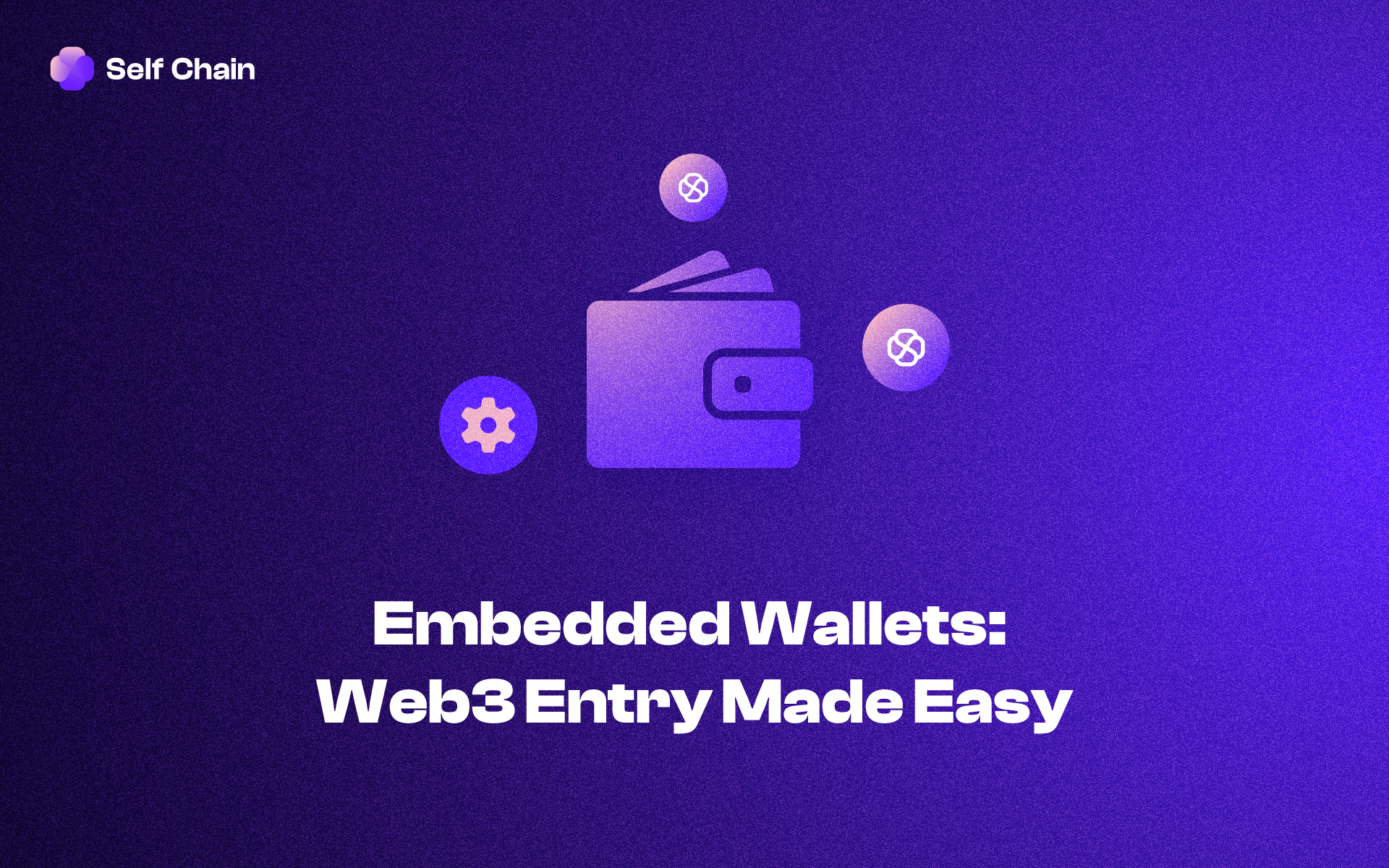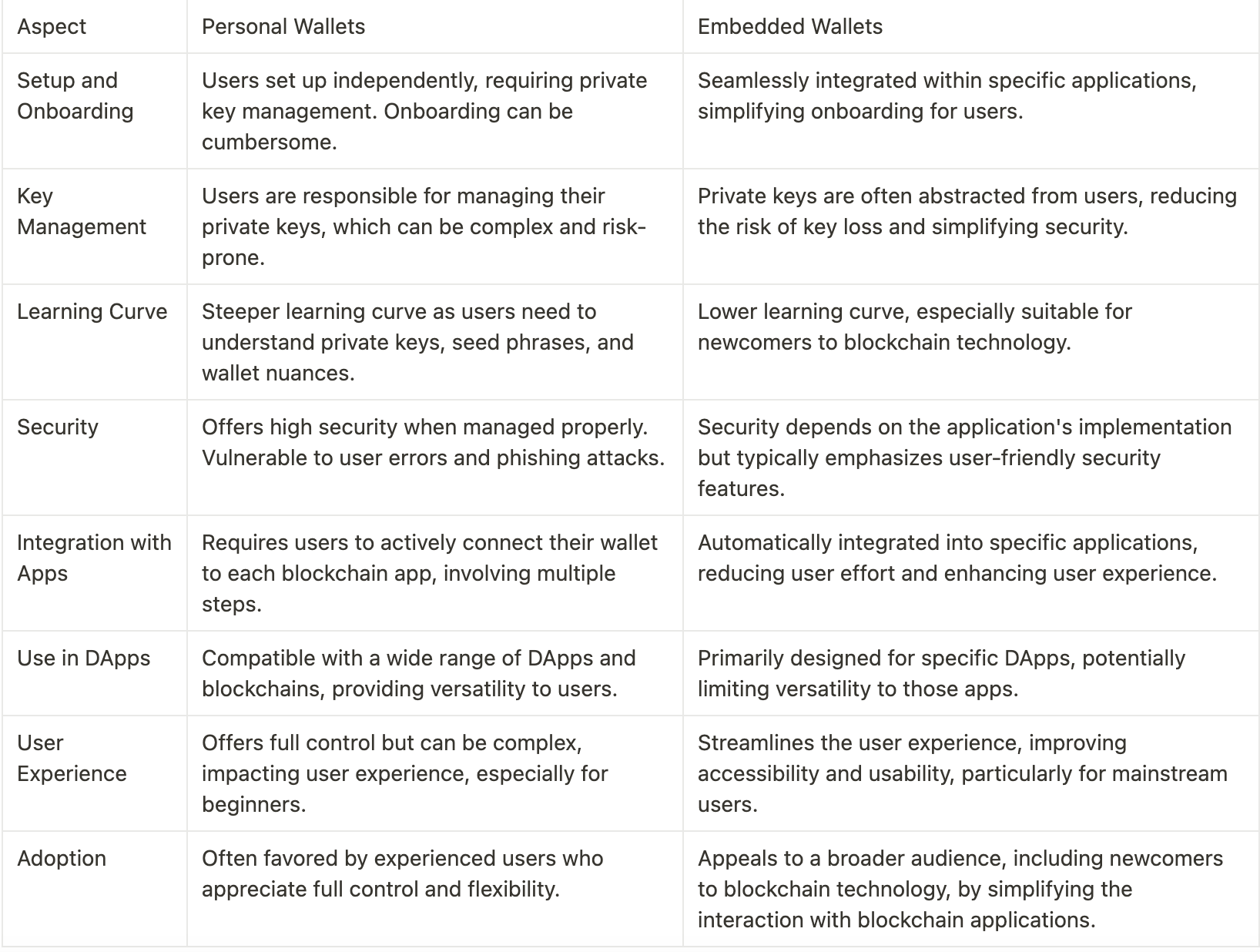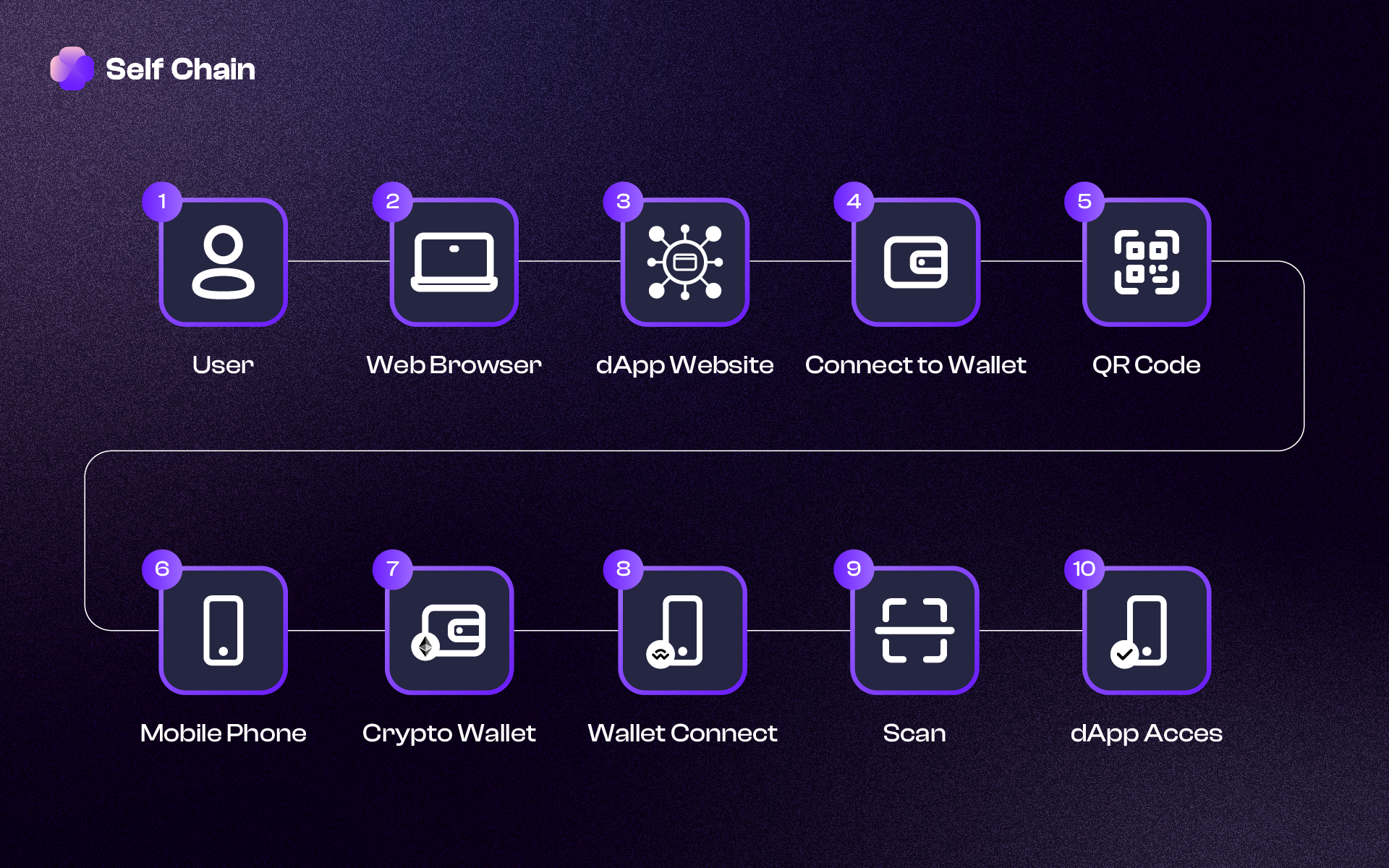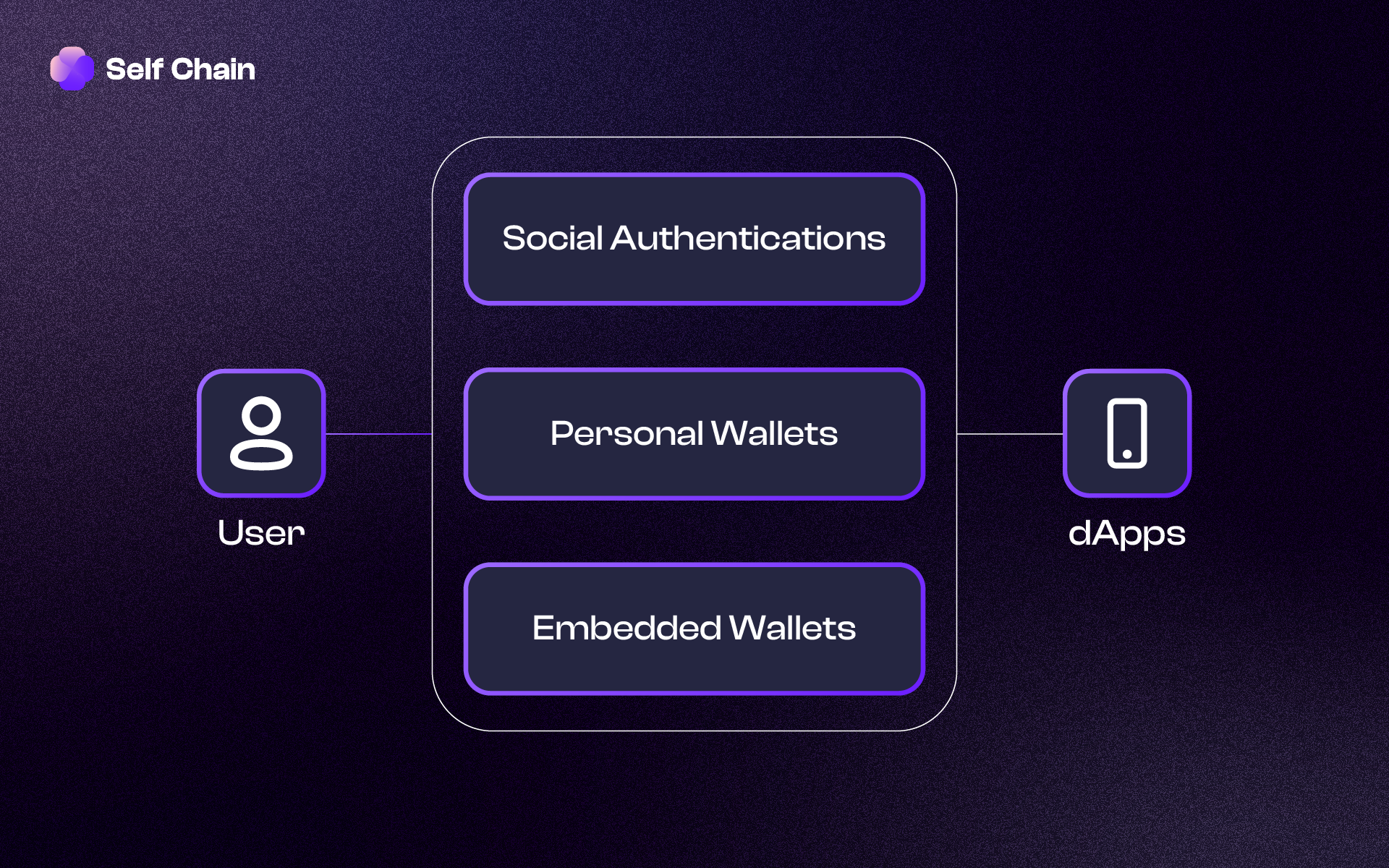Embedded Wallets: Web3 Entry Made Easy
Explore how Self Chain's embedded wallets are simplifying and securing Web3 interactions for users.

The world of Web3 and decentralized applications (dApps) is constantly evolving. As more users enter the blockchain space, developers are exploring innovative ways to enhance the user experience. One significant development in this regard is the concept of embedded wallets. In this article, we'll delve into the world of embedded wallets and how they are simplifying the Web3 landscape.
Introduction to Embedded Wallets
Embedded wallets are a game-changer in the world of cryptocurrencies and decentralized applications. Unlike traditional personal wallets, embedded wallets are seamlessly integrated digital wallets within specific applications, simplifying access to blockchain technology.
Unlike traditional personal wallets, users don't need to set them up independently or manage complex private keys. These wallets are designed to offer a user-friendly experience, making blockchain interactions more accessible, particularly to newcomers.
Embedded wallets streamline onboarding, removing the need for users to navigate the complexities associated with standalone wallets, and are poised to drive greater adoption of decentralized applications and cryptocurrencies.
Embedded vs. Personal Wallets: A High-Level Comparison
Before we dive deeper into embedded wallets, let's briefly compare them to conventional personal wallets for a better understanding.

The User’s Path To dApps
Before embedded wallets came along, using different dApps meant you had to learn a lot about managing crypto wallets. It wasn't a straightforward journey. In fact, it could get pretty complicated. Plus, this complexity made users more vulnerable to potential attacks, which hackers loved. Those traditional personal wallets, especially the hardware ones that relied on seed phrases, just weren't built for the fast-paced world of apps. They were more suited for occasional use like trading or storage, not the frequent interaction dApps demand.

With the help of Embedded Wallets, the onboarding process became easy:

Let's Zoom In
Now that we understand the advantages of embedded wallets, let's explore some practical applications:
SocialFi and GameFi Projects:
SocialFi and GameFi are all the rage in the crypto space. These projects are all about high-speed, high-frequency action. Think of buying, selling, and trading digital assets like it's a fast-paced game.
Embedded wallets are here to deliver the ultimate web2-style experience in the web3 world. Picture this: you log in just like you do with your favorite web2 apps. No need for complex wallet setups. It's all-in-one, in a single place.
Imagine having your crypto activities neatly organized under one roof. No more jumping between apps, fumbling with different tools, or managing multiple accounts. With embedded wallets, it's all streamlined, just like your everyday web2 experience.
It's the best of both worlds, combining the power of crypto with the simplicity of web2-style logins, making your crypto journey smoother and more enjoyable than ever before.
Real Case Study: FriendTech
Friend.Tech, which has taken the crypto world by storm recently, is a shining example of how embedded wallets can revolutionize the user experience. This exclusive social app operates on an invitation-only basis and introduces a unique concept where users can trade "shares" of each other's Twitter accounts. However, what truly sets FriendTech apart is its ingenious utilization of embedded wallets.
Embedded wallets are seamlessly integrated into the app, making it effortless for users to participate in buying and selling these Twitter account "shares." Unlike traditional personal wallets that often require complex setups and management, embedded wallets are designed for simplicity and ease of use.
This innovative approach not only simplifies the user's journey but also fosters increased engagement. Users can navigate the app, make transactions, and interact with the platform without the hassle of dealing with external wallets or intricate crypto processes. Friend.Tech's success story underscores how embedded wallets can transform user interactions and drive adoption in the crypto space by making the experience more accessible and enjoyable for all.
The Synergy of Keyless and Embedded Wallets
Now that we've seen how embedded wallets can greatly improve the user experience in applications like Friend.Tech, let's talk about the connection between keyless wallets and embedded wallets. The relationship between keyless wallets and embedded wallets is one of synergy. Keyless wallets, with their simplified private key management, serve as the foundation for the creation of embedded wallets within dApps. When integrated into dApps, keyless wallets retain their core functionality while being seamlessly incorporated into the dApp's interface.
This fusion results in a cohesive user experience, where users can perform cryptocurrency transactions within the dApp, all while benefiting from the advanced security measures of keyless wallets. The balance between enhanced security and user-friendliness is at the heart of this relationship.
In essence, keyless wallets are the technological backbone that empowers dApps to provide their users with a secure and user-centric cryptocurrency interaction experience. This relationship delivers the best of both worlds: robust security measures and a seamless, integrated experience within decentralized applications. It's a paradigm shift that is redefining how users perceive and engage with blockchain technology.
Self Chain: The Keyless Wallet Infrastructure
Self Chain introduces a groundbreaking solution in the blockchain realm, being the first to present a Modular Intent-Centric Access Layer1 blockchain alongside a keyless wallet infrastructure. Our use of MPC-TSS/AA technology revolutionizes multi-chain Web3 access. This innovative approach simplifies the onboarding process and enhances user security, making Self Chain a key player in this transformative landscape.
Among our standout offerings is the Keyless Wallet SDK, a powerful tool for dApp developers. This SDK enables seamless integration of keyless wallets into dApps, significantly bolstering the security of embedded wallets. GameFi and SocialFi projects can utilize the Self Chain Keyless Wallet SDK to build their own embedded wallets, further enhancing security and elevating the user experience to new heights.
In essence, Self Chain is committed to safeguarding your digital assets and enhancing the dApp user experience. It's a combination of security and usability that defines our mission.
Embedded wallets powered by Self Chain Keyless wallet SDKs are set to transform the Web3 landscape. They offer a user-friendly gateway to the world of blockchain, making it accessible to a broader audience. As the crypto space continues to evolve, embedded wallets are likely to play a crucial role in onboarding new users and driving adoption. It's an exciting time for Web3, where simplicity and security go hand in hand, thanks to innovations like keyless wallet technology.
